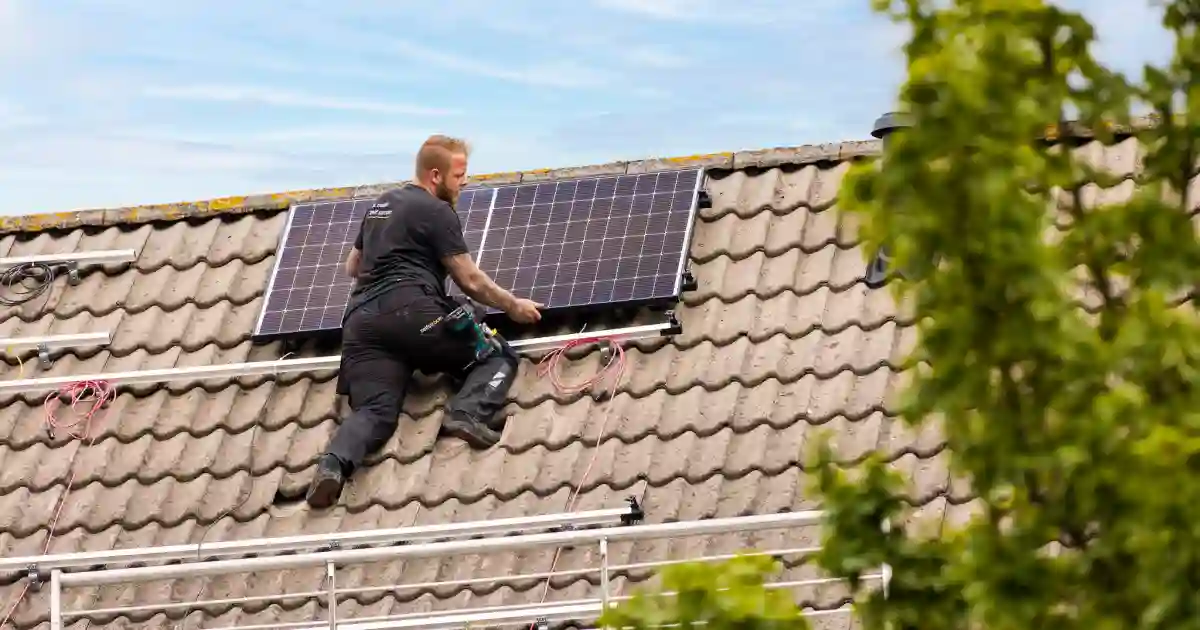The Internet of Things (IoT) has revolutionized the way we connect, communicate, and interact with the world around us. In recent years, IoT technology has found its way into the realm of renewable energy, particularly in the integration of solar panels. This merging of solar panels and IoT has led to the creation of smart energy solutions that are transforming the way we generate, manage, and consume electricity. In this article, we will explore the intersection of solar panels and the Internet of Things, highlighting the advantages and potential of this innovative partnership.
Understanding the Internet of Things (IoT)
The Internet of Things refers to the interconnected network of physical objects, devices, and sensors that are equipped with internet connectivity, allowing them to collect and exchange data. IoT technology enables devices to communicate with each other and with centralized systems, facilitating remote monitoring, control, and automation.
Key characteristics of IoT technology include:
- Sensors: IoT devices are equipped with various sensors that gather data about the environment, such as temperature, humidity, light, and motion.
- Connectivity: IoT devices use wireless communication protocols, such as Wi-Fi, Bluetooth, or cellular networks, to transmit data to centralized servers or other devices.
- Data Analysis: Collected data is analyzed and processed to derive insights, make informed decisions, and trigger actions or alerts.
- Automation: IoT devices can automate tasks and processes based on predefined rules or conditions, improving efficiency and convenience.
- Remote Access: Users can access and control IoT devices remotely through web interfaces or mobile applications, providing real-time monitoring and control capabilities.
Solar Panels and IoT Integration
The integration of IoT technology with solar panels has opened up new possibilities for the management and optimization of solar energy systems. Here are some key ways in which IoT enhances the capabilities of solar panels:
- Real-Time Monitoring: IoT sensors can monitor the performance of solar panels in real time. These sensors measure parameters like energy production, temperature, and panel efficiency, allowing users to identify and address issues promptly.
- Predictive Maintenance: IoT-enabled solar panels can detect anomalies and wear-and-tear in the system. This data can be used to predict when maintenance or repairs are needed, reducing downtime and increasing system longevity.
- Energy Consumption Insights: IoT technology can provide insights into household or commercial energy consumption patterns. By correlating energy production data from solar panels with consumption data, users can optimize their energy usage and make informed decisions to reduce energy bills.
- Weather Forecast Integration: IoT sensors can access weather forecasts and adjust the operation of solar panels accordingly. For example, solar panels can tilt to optimize sun exposure or temporarily shut down during adverse weather conditions to prevent damage.
- Remote Control: IoT-enabled solar panels allow users to control their systems remotely. They can start or stop the panels, adjust panel angles, or switch between grid-tied and off-grid modes from their smartphones or computers.
- Energy Storage Management: When combined with energy storage solutions, IoT technology can optimize the charging and discharging of batteries. This ensures that stored energy is used efficiently during peak demand periods or during power outages.
Advantages of Solar Panels Integrated with IoT
- Improved Efficiency: IoT-enabled solar panels can operate more efficiently by adjusting their angle and orientation to maximize sunlight exposure. This leads to increased energy production and higher energy yields.
- Enhanced Reliability: Real-time monitoring and predictive maintenance minimize the risk of system failures. Solar panels can self-diagnose and notify users of potential issues, allowing for timely repairs and greater system reliability.
- Cost Savings: By optimizing energy production and consumption, IoT-integrated solar panels help reduce energy bills and extend the lifespan of the system, resulting in long-term cost savings.
- Environmental Benefits: Increased energy efficiency and better energy management contribute to a reduced carbon footprint, making solar energy an even more eco-friendly choice.
- Greater Autonomy: Remote control capabilities give users greater control over their energy production and consumption, allowing them to be less reliant on the grid and more self-sufficient.
Practical Applications
- Residential Solar Panels: Homeowners can benefit from IoT-integrated solar panels by monitoring energy production and consumption, adjusting panel angles, and receiving maintenance alerts. This ensures optimal performance and cost savings.
- Commercial and Industrial Installations: Businesses can use IoT technology to manage larger-scale solar installations efficiently. They can monitor multiple arrays, optimize energy use during peak hours, and ensure uninterrupted energy supply to critical operations.
- Agriculture: Solar panels equipped with IoT sensors can benefit the agricultural sector by powering irrigation systems, monitoring soil conditions, and remotely controlling farm equipment.
- Smart Cities: IoT-integrated solar panels can be used in urban environments to power streetlights, monitor air quality, and provide Wi-Fi connectivity in public spaces.
- Emergency Preparedness: Solar panels with IoT capabilities can be essential during emergencies and natural disasters. They can continue to operate autonomously, providing power to critical infrastructure and communication systems when the grid is down.
Challenges and Considerations
While the integration of IoT with solar panels offers numerous advantages, there are some challenges and considerations to keep in mind:
- Security Concerns: IoT devices are susceptible to cybersecurity threats. Proper security measures must be in place to protect the data and functionality of IoT-integrated solar panels.
- Data Privacy: Collecting and storing data from IoT devices can raise privacy concerns. Users must be informed about data collection practices and have control over their data.
- Compatibility: IoT systems should be compatible with existing solar panel installations or other energy management systems to ensure seamless integration.
- Cost: IoT-enabled solar panels may come at a higher initial cost. However, the long-term benefits, including energy savings and improved efficiency, often justify the investment.
- Maintenance and Updates: IoT systems require regular maintenance and software updates to ensure optimal performance and security. Users should have access to reliable support and updates.
Conclusion
The fusion of solar panels with IoT technology represents a significant leap forward in the quest for clean, efficient, and sustainable energy solutions. IoT-integrated solar panels empower users with real-time monitoring, predictive maintenance, and remote control capabilities, allowing them to maximize energy production and optimize consumption.
As technology continues to advance, the synergy between solar panels and the Internet of Things will play a vital role in the transition to renewable energy sources and the creation of smarter, more sustainable communities. By harnessing the power of the sun and the connectivity of IoT, we are moving closer to a greener and more efficient energy future.








